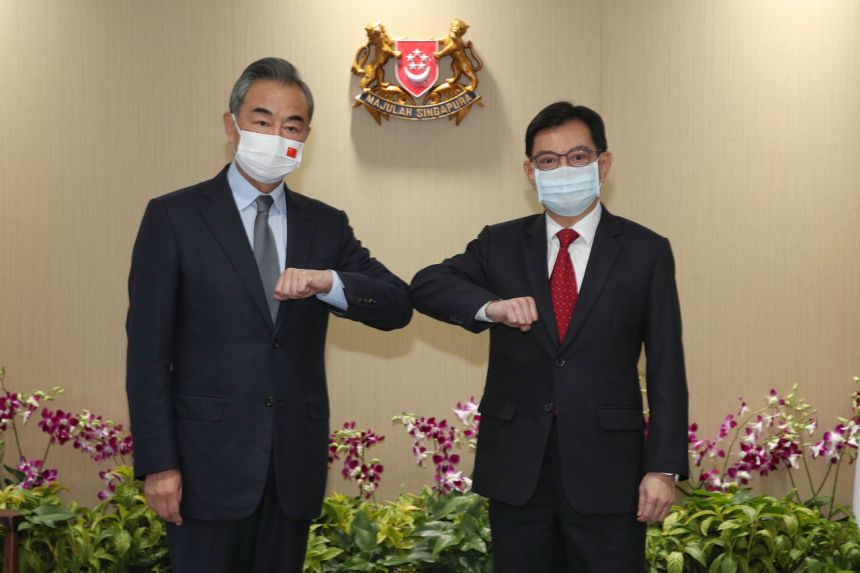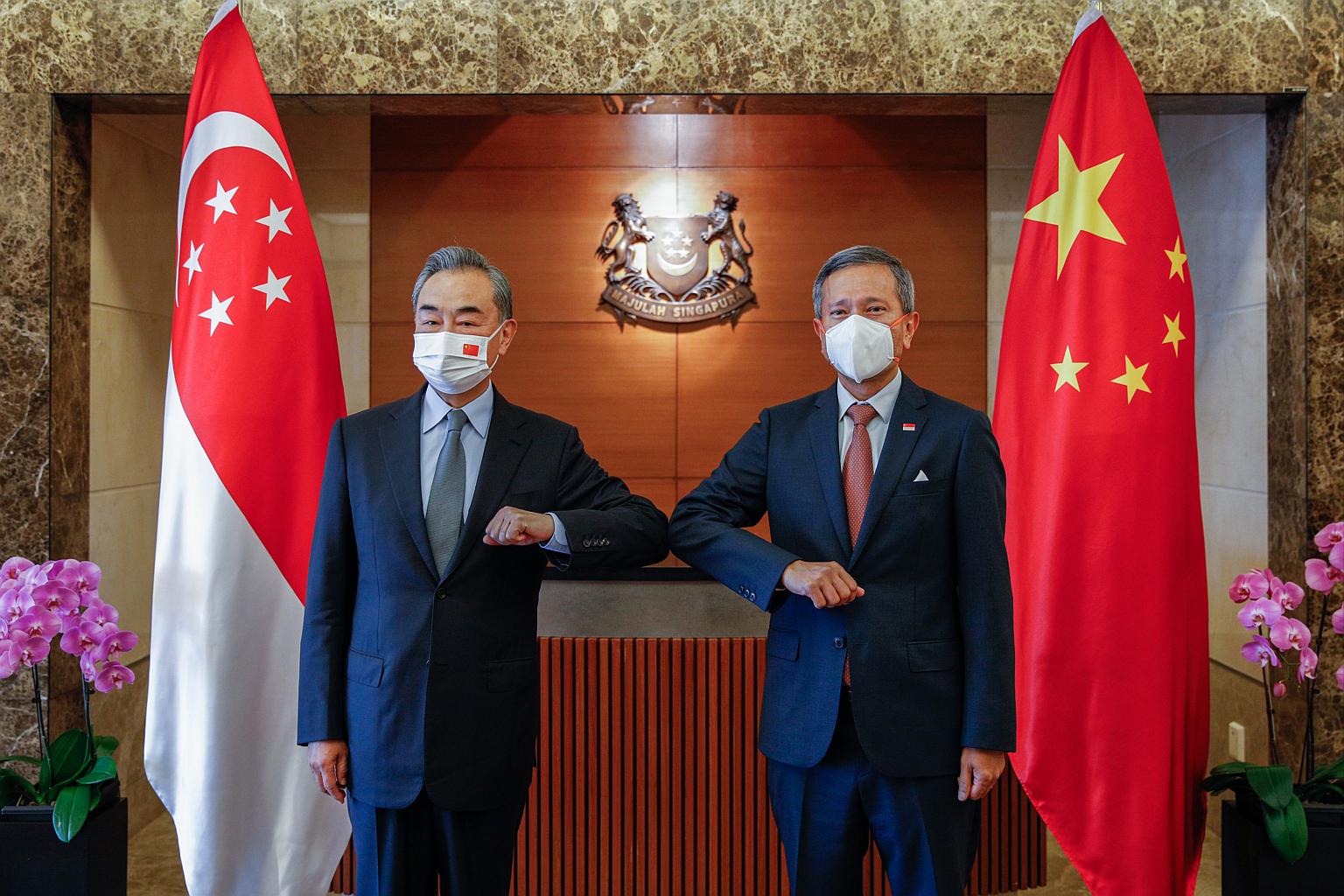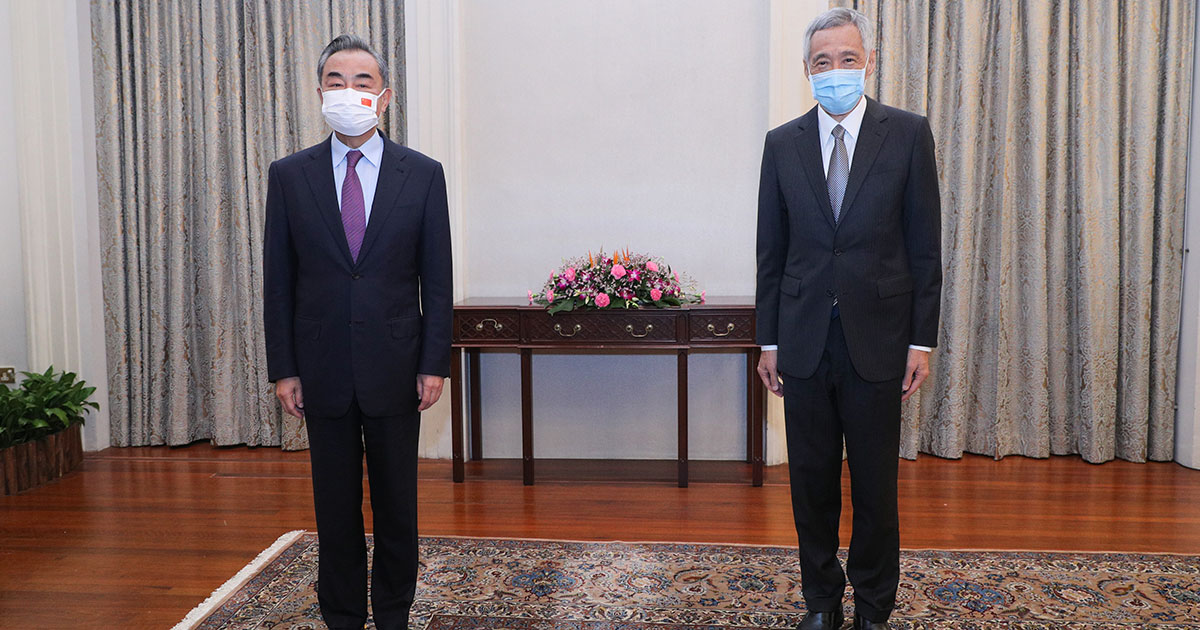Chinese Foreign Minister Wang Yi called on Prime Minister Lee Hsien Loong at the Istana on Tuesday, Sep. 14, 2021.
The meeting saw both leaders talk about ties between the two countries during the pandemic.
In a Facebook post after the meeting, PM Lee, 69, wrote:We reaffirmed the longstanding ties between our countries, and had a productive and candid discussion on international and regional developments. Despite challenging global circumstances in this pandemic, we have continued working closely, sharing resources and expertise to better manage the outbreak.
Wang, 67, is in Singapore on a two-day working visit.
Met deputy prime minister and foreign affairs minister
The Chinese leader met Deputy Prime Minister Heng Swee Keat and Foreign Affairs Minister Vivian Balakrishnan in separate sessions on Monday, Sep. 13.
 via MCI
via MCI
 via MFA
via MFA
Singapore's Ministry of Foreign Affairs (MFA) said Heng and Wang noted the excellent relationship between Singapore and China, as well as progress made in deepening cooperation, even amid the disruptions caused by the Covid-19 pandemic.
They also looked forward to the upcoming 17th Joint Council for Bilateral Cooperation this year, which will be co-chaired by Heng and Chinese Vice-Premier Han Zheng.
Balakrishnan and Wang also reaffirmed the strong ties between the two countries and discussed ways to further strengthen relations.
Both foreign affairs ministers also looked forward to the early entry into force of the Regional Comprehensive Economic Partnership (RCEP), which has been ratified by both Singapore and China.
The RCEP is the world's largest trade pact.
It brings together 10 Asean countries with the grouping's key partners Australia, China, Japan, South Korea and New Zealand.
Balakrishnan also welcomed China's interest in the Comprehensive and Progressive Agreement for Trans-Pacific Partnership that brings together 11 countries from both sides of the Pacific, seven of which are also in the RCEP.
Top photo via Ministry of Communications and Information
If you like what you read, follow us on Facebook, Instagram, Twitter and Telegram to get the latest updates.
